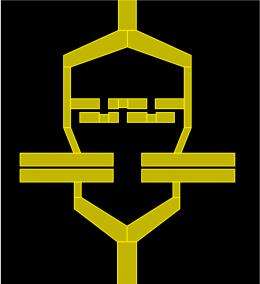Tuning in to noisy interference

Establishing a detailed knowledge of the noise properties of superconducting systems is an important step towards the development of quantum computers, which will enable new types of computing. However, the signals of these systems’ tiny electronic components, such as transistors on a chip, are so small that ambient noise creates interference. This problem is compounded by the delicate nature of the technology’s quantum physical states, which are also susceptible to noise. Now, an international research team has successfully measured the noise spectrum of a superconducting circuit—called a superconducting flux qubit—that is widely investigated for its potential in quantum computing applications.
Precise measurements of the environmental noise affecting superconducting flux qubits are important, according to team leader Jaw-Shen Tsai from the RIKEN Advanced Science Institute in Wako. “They may give us crucial information about the microscopic origin of the noise source, about which we have no solid understanding at all,” he says.
The superconducting flux qubit studied by the researchers is a circuit consisting of several junctions, and is a key technology in quantum computing because it can be integrated into a chip. The first hurdle cleared by the researchers was keeping the qubit stable, and therefore viable, long enough to complete the measurement of the frequency spectrum of the noise that would occur in a quantum computer. They achieved this by applying a series of magnetic pulses that effectively replenished the qubit’s quantum state. The net effect of the magnetic pulses was to suppress detrimental contributions from low-frequency noise, as the pulses affect only the quantum states and not the noise.
Suppression of the low-frequency noise extended the lifetime of the quantum information in the qubit by almost an order of magnitude, and enabled the measurement of noise intensity in the system across three orders of magnitude in frequency from 0.2 to 20 MHz. This new-found knowledge on the noise spectrum will be valuable in developing strategies to counter such noise. “If we understand the nature of the noise, we may be able to reduce it considerably,” Tsai explains.
Moreover, the team’s strategy of extending qubit lifetimes to measure the noise spectrum is not limited to the study of quantum computing circuits; it could also be applied to other systems that operate under similar conditions. Medical imaging and sensing devices, for example, which often operate at the limits of signal resolution, could benefit from this noise reduction strategy.
More information: Bylander, J., et al. Noise spectroscopy through dynamical decoupling with a superconducting flux qubit. Nature Physics 7, 565–570 (2011). doi:10.1038/nphys1994
Provided by RIKEN



















